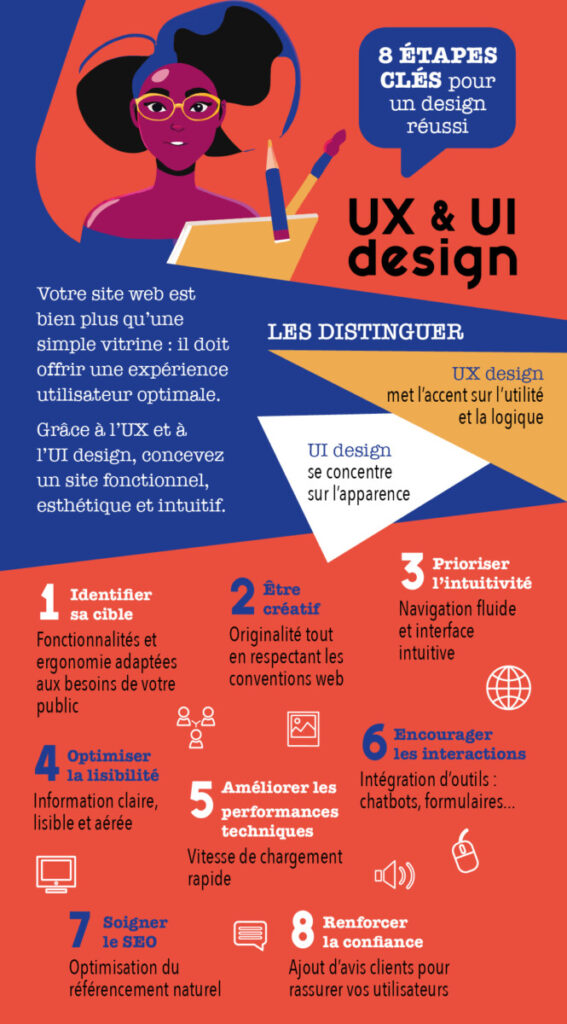Is the relevance of web visibility self-evident? Yes, but social networks are not enough. Your website is much more than just a shop window: it needs to offer an optimal user experience. UX and UI design (user experience and user interface) come together to design a functional, aesthetic and intuitive site.

Understanding the basics of design
Web design is not just about aesthetics. It's about thoughtful design. The aim: to make the site practical and intuitive, rather than just 'pretty'.
Distinguishing between UX and UI
UI design: focuses on appearance. Example: "What colour should the button be to attract attention?
UX design: focuses on usefulness and logic. Example: "Is this button necessary?
These two disciplines work together to deliver an optimal user experience.
8 key steps to successful design
1. Identify your target
Analyse your users to propose features and ergonomics tailored to their needs.
2. Being creative
Show originality while respecting web conventions: logo placement, login button, etc.
3. Prioritise intuitiveness
Aim for smooth navigation and an intuitive interface.
4. Optimising readability
Provide clear, legible and well-spaced out information.
5. Technical performance
Make sure your site loads quickly to avoid losing your visitors.
6. Encouraging interaction
Integrate tools such as chatbotsYou'll also be able to create forms and opt for an omnichannel approach.
7. Taking care of SEO
Optimise natural referencing: make sure your site is visible on search engines.
8. Building trust
Add customer reviews to reassure your users.
By following these principles, your site will not just be visited: it will be appreciated. UX and UI design are the pillars of a site that attracts, engages and converts.






